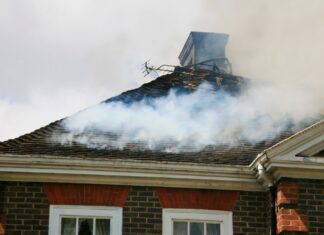
Evesham, Medford, Shamong, Southampton, Tabernacle and Woodland, along with the LRHSD, will lose a combined $24 million by the 2024–2025 school year.

Six of the Lenape Regional High School District’s eight sending districts have joined together with officials from the high school district to plan a course of action to reverse what officials describe as “drastic” cuts in state aid funding.
According to officials at a community forum at Shawnee High School this week, cuts will negatively impact the K-8 districts in Evesham, Medford, Shamong, Southampton, Tabernacle and Woodland, along with the Lenape Regional High School District itself.
All together, officials say these local districts stand to lose a combined total of about $24 million by the 2024–2025 school year.
Present at this week’s meeting was LRHSD Superintendent Carol Birnbohm, along with each of the superintendents of the local school districts in the Lenape region affected by the cuts.
Superintendents took turns at the meeting outlining the potential causes of the cuts, how communities can fight back and what would happen on the local level if the cuts were not reversed.
According to Evesham Township School District Superintendent John Scavelli Jr., these looming cuts are a result of the implementation of provisions in the School Funding Reform Act from 2008.
Although the act has been in place since 2008, until last year, districts were “held harmless” if the funding formula utilized by the act found that a district was to lose funds.
However, now the formula is being enacted, which, according to Scavelli, is mainly based on the increases or decreases of a district’s enrollment, the personal wealth of those living in a district and property values (ratables) of the municipality where a district is located.
Looking just at the Evesham Township School District, and based on the factors of the funding formula, Scavelli said that logically his district should expect a shift in state aid funding, since his district has faced a drop in enrolment since its peak year of 2003, while the wealth of Evesham’s residents and property values have risen in that time.
However, he questioned the magnitude of the decrease to which Evesham is facing — an estimated $9 million by the 2024–2025 school year — and he noted there are many other districts with circumstances “completely different” to those of Evesham, yet those districts are facing reductions in aid as well.
“There’s really no common denominator as we’ve seen it to figure out exactly why districts have been affected,” Scavelli said.
Scavelli also noted that while the cuts had already begun to affect districts in the current 2018–2019 school year, the cuts are scheduled to increase in future years until they’re fully implemented.
With those cuts on the horizon, Southampton Township School District Superintendent Michael Harris has been steering a statewide coalition of districts entitled the Support Our Students Advocacy Group, which has more than 60 districts across the state representing nearly 140,000 students.
Together, members of the group are working to spread awareness of the cuts and rally their communities to urge state legislators to find a solution in which all school districts in New Jersey can receive funding that is “fair” for every student in every district.
According to Harris, there are 180 schools district across the state losing some level of state aid, and as Scavelli said, Harris noted the reasons for those loses are “unique” to each district.
Harris also noted the S.O.S. group is not looking to take away funding from those districts that might have gained funding or had their funding remain level now that the funding formula is being enacted.
Rather, Harris said the group was fighting for the “equitable” funding for all districts.
“A one-size-fits-all type of solution does not exist,” Harris said. “That’s what makes part of this very complex.”
Also speaking at this week’s meeting was Medford Township Public Schools Superintendent Joe Del Rossi, who outlined what residents could expect on the local level if districts in the Lenape Region did not see the cuts to aid reversed.
While districts would almost also certainly be forced to raise taxes, districts would also have to make cuts to academic programs, social and emotional learning, personnel and school facilitates.
Rossi said that while every district would react differently, and while some districts may have already enacted certain choices when dealing with budget shortfalls in past years, in general, districts would be facing similar choices.
Those choices could include cutting staff, increasing class sizes, eliminating programs, eliminating after-school activities, increasing activity fees, reducing school security enhancements, cutting buses and thus causing longer bus routes, eliminating late buses, not replacing classroom materials, text books and technology and privatizing transportation, cafeteria, maintenance and grounds services.
“A great deal will be at stake for our children and our schools,” Del Rossi said.
Looking forward, officials ask that residents join together to fight the cuts, including following the S.O.S. group on Twitter at Twitter.com/nj_sos.
Supporters are also asked to send letters to Gov. Murphy and their local legislators asking for support.
The group is also looking to rally supporters to wear white and march on the statehouse in Trenton on March 5 — the day of Murphy’s budget address — in an attempt to get the attention of legislators and the governor.









